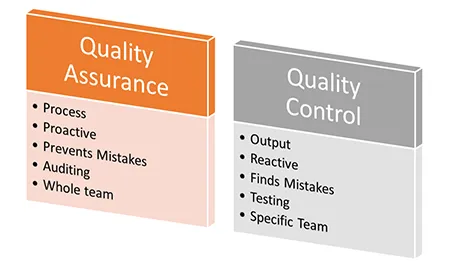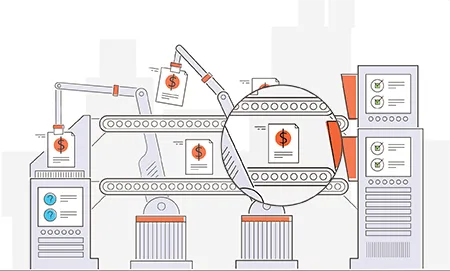Quality Assurance with Workflow Automation
Table of contents

When we think of Quality Assurance we often think about the manufacturing of cars, toys, food, etc. to meet the expected standards of quality set by a company or regulatory body. However, quality assurance can be applied to a wide variety of business disciplines and is not just limited to the production of a physical good.
What is Quality Assurance
Quality assurance is a practice used to prevent the occurrence of errors during a process. These processes could be related to the production of goods, the delivery of services, the designing of software, or any other business process. Generally, quality assurance consists of administrative and procedural workflows that ensure that requirements and goals for an activity, service, or product, are met.
As an example, the medical profession leverages quality assurance tactics to ensure the expected quality of medical care is provided. These tactics focus on structures or processes of medical care that have a demonstrated relationship to positive health outcomes. In the medical field, in particular, quality assurance is truly an ethical and moral obligation.
What is the Difference Between Quality Assurance and Quality Control
People often interchange the use of “quality assurance” and “quality control” but they do mean different things. Quite simply, quality assurance is the set of activities and methods that are used to determine the procedures and standards to develop a product or service, while quality control is the process of determining whether or not the product or service meets those quality assurance goals.

In other words, quality assurance works to prevent mistakes, whereas quality control works to identify mistakes. Certainly, findings from the quality control process can be used to inform future iterations of quality assurance procedures, but in most cases, when both functions are performing at their highest competency, mistakes are minimal if not non-existent, and quality control simply serves as a final checkpoint to ensure the product or service is ready for delivery to the consumer, end user, or employee.
Quality Assurance Examples
Customer Onboarding
We all know the importance of delivering a quality customer experience from the outset of a new customer relationship. To accomplish this, companies rely on a series of hand-offs and knowledge transfers between staff as a new customer comes aboard. Depending on the industry the client onboarding process can impact sales, accounting, customer service, operations, and many more departments. Unfortunately, these critical hand-offs between staff and departments are often entirely manual, causing mistakes, delays, and other quality issues.
Regardless of the type of product or service you will be providing your customers, if the onboarding process isn’t consistent, hand-offs are botched, mistakes are made, and the overall experience is confusing, you’ll be sure to experience a negative customer reaction.
Mortgage Application Process
In the mortgage industry a quality assurance analyst reviews and prepares financial documents for internal audits and regulatory agencies. This specialist is responsible for reviewing loan applications for their completeness, including checking credit history, checking on home appraisals, conducting a title search, securing home and/or plat surveys, etc.
When this quality assurance process is done correctly, it mitigates the presence of errors that could be found at the loan closing, thus allowing the homeowner to close on their loan and take ownership of their new home in the expected timeframe. By automating the internal audit process and including specific oversight/approval steps by managers, mistakes can be discovered during the process rather than after it's too late.
How Does Workflow Automation Assist with Quality Assurance?

So where does workflow automation fit in with building a repeatable, successful quality assurance function? There are actually many benefits to applying workflow automation to quality management systems:
- Complete audit trail of actions and activities
- Reduced process cycle times
- Enforced oversight and compliance rules
- Consistency of processes with exception handling
- Centralized governance
- Reduced training time
- Capacity for continuous improvement
- Cost savings by redeployment of human staff to functions that require manual intervention
In addition to the above benefits, the most impact and beneficial return in investment (ROI) can be found when leveraging automation for:
- Processes that take an extraordinary amount of time to learn and to deploy
- Repetitive processes and cycles
- Processes that are prone to cause human error
- Processes that span multiple divisions and geographies
- Processes that require data to be integrated from multiple systems
Now let's revisit the previous examples with workflow automation applied.
Customer Onboarding
By moving a manual onboarding/intake processes to an automated platform, as tasks are completed (either sequentially or in parallel) the next hand-off is triggered and monitored for policy adherence. In other words, the people who have to perform the next task are alerted, reminded, and escalated automatically. Data entry is replaced by data integration to avoid manual re-entry of data. For instance, a single customer intake form may feed multiple systems (CRM, ERP, Accounting, etc.) with whatever data is relevant.
Mortgage Application Process
By automating the internal audit process and including specific oversight/approval steps by managers, mistakes can be discovered during the process rather than after it's too late. As an analyst works through the review process, they mark tasks as completed. This alerts their manager (or another oversight role) that there are tasks to be reviewed and signed off on. These tasks may be happening in parallel to keep the process moving forward. Once all the tasks have been completed and approved, the loan application is packaged, scored and ready for the next stage.

Tips for Applying Automation to Your Quality Assurance Requirements
For a more complete list of tips, see our post "Planning for Workflow Automation."
When applying automation to your quality assurance process, there are a variety of considerations:
- Never short-change the process design and validation phase. This will take longer than anyone thinks.
- Identify critical key performance indicators (KPIs) to measure against and get executive buy-in on those KPIs.
- Customize dashboards and audit pages to provide managers with at-a-glance information on KPIs.
- Plan how to leverage people in an environment that now uses workflow automation (some may have changed or new roles).
- Create high-quality test data and scenarios to prove the automated process will work as expected. Review audit detail to ensure you are tracking what needs to be tracked.
- Select the automation platform that best suits your specific needs. Recognize when an existing tool or "highly recommended" tool just isn't the right fit.
And with any automation approach, while the goal is to “set it and forget it,” in reality, automated workflows need to be checked and fine-tuned repeatedly to account for new information that needs to be built into the process. Continuous improvement becomes critical as the business responds to change.
In Summary
When you think about your department or your business in terms of Quality Assurance and Quality Control you realize that, ultimately, it's the difference between keeping or losing customers and beating or falling behind competitors. No matter what your business is, quality assurance needs to be standardized and, whenever possible, automated.

Mike Raia
Marketing the world's best workflow automation software and drinking way too much coffee. Connect with me on LinkedIn at https://www.linkedin.com/in/michaelraia/(opens in a new tab)








